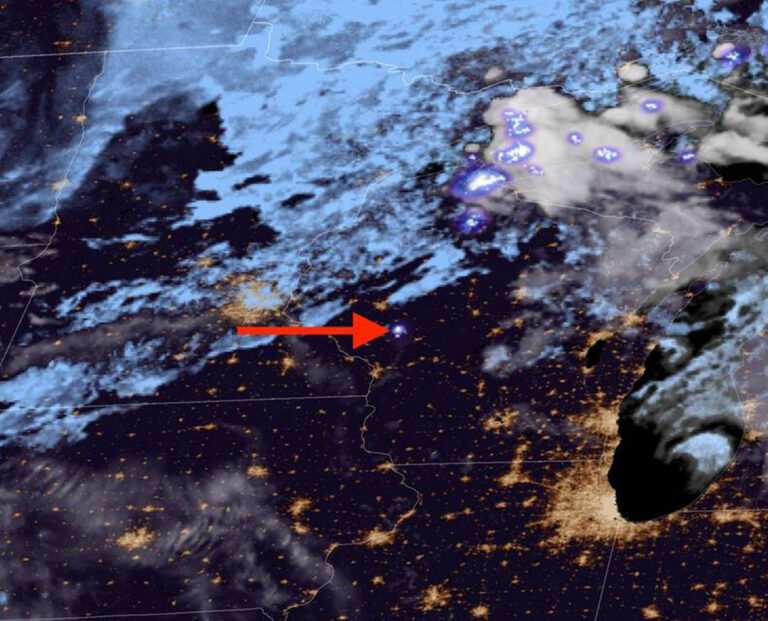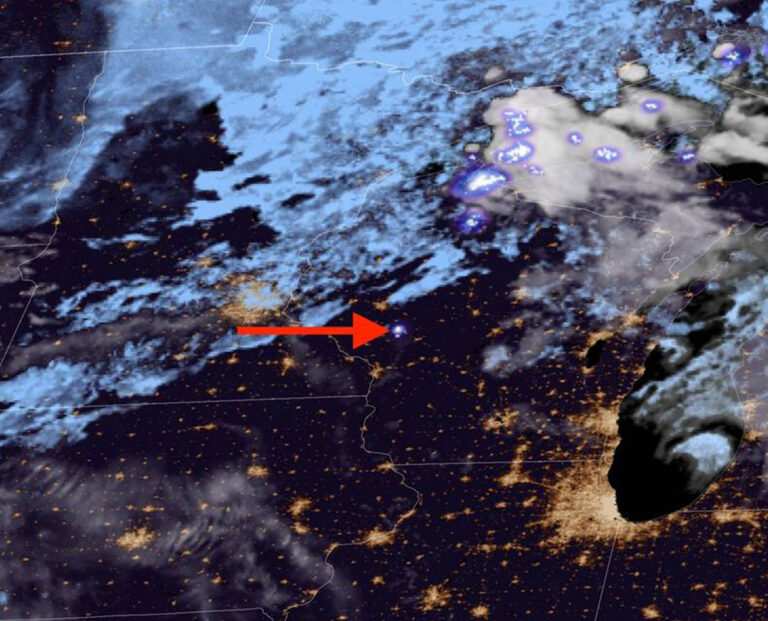
A lot of Midwesterners were recently left impressed, and momentarily wondering what the heck they just saw, after a blazing fireball violently and loudly broke apart overhead.
The fireball, which was later determined to be an asteroid fragment, was first seen soaring across the Midwestern sky at about 6:13 a.m. Friday, NASA said in a news release.
Though it was already light outside, the fireball was particularly bright and clearly visible to witnesses in Iowa, Illinois, Minnesota and Wisconsin, according to reports submitted to the American Meteor Society.
“I saw a great bright white light, and I thought that’s unusually bright for a headlight on a plane this time of day,” a Wisconsin resident said. They slowed down to get a better look, and the object appeared to be “rolling across the sky” until it suddenly “evaporated into 2 very white smoke clouds.”
Of the 128 reports submitted to the AMS, 18 people said they heard the fireball, with some describing an explosive boom as it burst into pieces.
“I saw a giant flash of light through my curtains and then it was a lot of minutes later that there was a huge boom. I honestly thought there was a nuclear explosion,” another Wisconsin witness said.
According to NASA, the fireball had broken off from a 4,000-pound asteroid as it was entering the earth’s atmosphere. The breakaway fireball was initially spotted about 50 miles above the community of Fairchild, Wisconsin, and moving at 36,000 miles per hour, NASA said.
“It reminded me of a welding arc, like a bright flash and just yellow sparking for the whole duration I saw it,” another witness reported. “My first instinct was a plane crash but … it was moving way too fast and burning way too bright.”
It traveled 39 miles southward in the atmosphere before NASA said it broke apart dramatically over the community of Shamrock — which is a roughly 190-mile drive from Milwaukee.
“The fireball broke apart with an energy of approximately 60 tons of TNT,” NASA said. “The flares were easily detected by the Geostationary Lightning Mappers on the GOES 16 and GOES 18 satellites.”
Even after the fireball was gone, it left a hard-to-miss smoke trail hanging in the sky, photos show. Witnesses reported the white streak lingering overhead for several minutes, with some saying as long as half an hour.
The daytime fireball was the first of two to grace the Midwest that day.
According to NASA, a second one was detected hours later at 11:15 p.m., zipping southeast at 52,000 miles per hour. It was initially visible near Rose City, Michigan, and disintegrated 42 miles away near Lake Stylus.
The second fireball was significantly less bright than the one heard and seen that morning.
“Even though the fireball saturated the meteor cameras, it was not bright enough to be detected from space,” NASA said. “The orbit of the object producing the meteor indicates that it was a fragment from a short period comet.”
Despite this, AMS reports suggest the duller object was still plenty bright to those who spotted it in eight U.S. states and Canada.
___
© 2024 The Charlotte Observer
Distributed by Tribune Content Agency, LLC.
American Military News Rephrased By: InfoArmed
